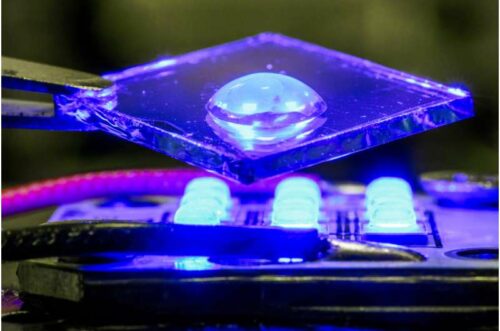Inspired by photosynthesis and using a photocatalyst, this method is more affordable and sustainable electronic components for various applications, including digital displays, solar cells, LEDs, sensors, implants, and energy storage.

Organic semiconductors, made from conductive plastics rather than silicon, have various applications including digital displays, solar cells, LEDs, sensors, implants, and energy storage. Doping, which involves adding substances to modify semiconductor properties, enhances conductivity. Traditional dopants are often unstable, expensive, and difficult to produce.
Researchers at Linköping University in Sweden have developed a method to enhance the conductivity of organic semiconductors using air as a dopant. The study marks a significant step towards more affordable and sustainable organic semiconductors. According to team this method could influence the doping of organic semiconductors. The components used are affordable, accessible, and potentially environmentally friendly, aligning with the prerequisites for sustainable electronics.
The new doping method developed at Linköping University operates at room temperature, using oxygen as the primary dopant, with light activating the process. Inspired by photosynthesis, the method uses a photocatalyst to facilitate electron transfer from an inefficient dopant to the organic semiconductor material. The process involves immersing the conductive plastic in a special salt solution with a photocatalyst and exposing it to light briefly. The degree of doping is determined by the duration of illumination. The solution can be reused, and the only consumed substance is oxygen.
The photocatalyst functions as an electron shuttle, transferring electrons in the presence of weak oxidants or reductants. This approach, common in chemistry, is new to organic electronics. It allows for simultaneous p-doping and n-doping, simplifying the production of electronic devices requiring both types of semiconductors, such as thermoelectric generators. This scalability enhances the manufacturing process. The doped organic semiconductor achieves better conductivity than traditional semiconductors. Earlier in 2024, Fabiano’s team demonstrated processing conductive plastics using environmentally friendly solvents like water. This new method is a continuation of their work. This photocatalytic doping method could become a cornerstone in organic electronics.
Reference: Simone Fabiano, Photocatalytic doping of organic semiconductors, Nature (2024). DOI: 10.1038/s41586-024-07400-5. www.nature.com/articles/s41586-024-07400-5






